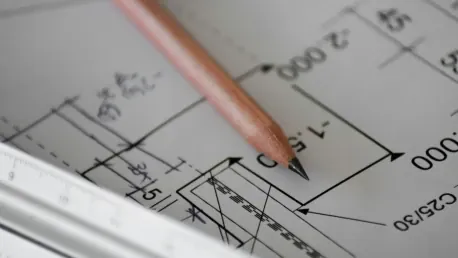Rice University has undertaken a series of major construction projects, reaffirming its commitment to providing state-of-the-art facilities for both current and future students. These initiatives reflect the university’s mission to foster an environment conducive to learning, research, and community engagement. Significant projects include the revitalization of the academic quad, the expansion of McNair Hall, and the construction of Sarofim Hall, designed specifically for visual arts programs. Each of these projects aims to enhance the learning experience and address the growing needs of the university community.
Academic Quad Revitalization
Enhancing Functionality and Aesthetics
The academic quad is one of the most iconic areas on Rice University’s campus, and it has recently undergone substantial maintenance and updates to its plant materials. George Ristow, the assistant vice president of the Facilities, Engineering, and Planning Department, explained that the primary goal of this project is to transform the 4-acre space into a more welcoming and functional area for both students and the community. Traditionally perceived as an overly formal area with insufficient shade, the updates seek to address these issues by introducing more vibrant plant materials and shaded areas, making it a more user-friendly and aesthetically pleasing space.
The changes aim to foster a sense of community and provide a more conducive environment for student activities. With improved landscaping and new seating areas, students can now utilize the space for relaxation, study sessions, and social gatherings. The renovation also includes better pathways and lighting, enhancing the overall functionality and safety of the quad. While the project required careful planning and substantial logistical support to minimize disruptions, the academic quad remained accessible during the maintenance and updates.
Student Perspectives
The ongoing construction projects have elicited a range of reactions from students, reflecting their diverse interests and priorities. Freshman Zain Khemani expressed confusion about the long-term construction in the quad but simultaneously showed excitement about the new visual arts facility, Sarofim Hall. The confusion stemmed from the project’s expansive scope and prolonged timeline, leaving some students uncertain about the final outcome. On the other hand, the anticipation surrounding Sarofim Hall highlights the student body’s eagerness for dedicated spaces for the visual arts, emphasizing the importance of non-STEM disciplines at the university.
Junior Sunny Sun, a business major, acknowledged the benefits of the project while also noting some temporary inconveniences. As a frequent visitor of the Twilight Epiphany Skyspace, which offers a serene environment for contemplation, she mentioned that the construction obstructed her view of the Skyspace, diminishing her enjoyment of the area. However, she recognized the prospective advantages, such as additional shaded areas and improved aesthetics that would eventually enhance the overall campus experience.
Expansion of McNair Hall
Meeting Growing Demands
McNair Hall, home to the Jones Graduate School of Business, has been expanded to meet the increasing demands of the university’s business programs. The expansion includes new spaces for events, food services, and undergraduate business courses, addressing the evolving needs of students and faculty. According to Ristow, the McNair Hall expansion has been a strategic response to the growing interest in business education, providing modern facilities that support innovative teaching methods and collaborative learning experiences.
The new spaces are designed to accommodate a variety of functions, from large-scale events and conferences to smaller, more intimate gatherings. This versatility ensures that the expanded facilities can be used for a wide range of purposes, enhancing the overall utility of McNair Hall. Additionally, the new food services area provides convenient dining options for students and faculty, fostering a more vibrant and dynamic campus life. The expansion is expected to be completed by the spring of 2026, offering state-of-the-art amenities that align with the university’s commitment to excellence in education.
Impact on Campus Life
The expansion of McNair Hall has significant implications for both undergraduate and graduate students, particularly those enrolled in business programs. Sunny Sun, a business major, has expressed support for the project, anticipating the benefits of additional classrooms for undergraduate courses. The expanded facilities will not only provide more space for coursework but also enhance the overall learning environment, promoting collaboration, innovation, and engagement among students and faculty.
However, the construction also brought certain challenges, as it temporarily obstructed views and access to some campus landmarks. The increased activity around McNair Hall created occasional disruptions, affecting the daily routines of students and faculty alike. Despite these inconveniences, the university has made concerted efforts to minimize the impact on campus life, ensuring that the academic quad and other critical areas remain accessible during the construction phase. The completion of the project is expected to significantly enhance the academic experience for business students, offering modern facilities that support advanced learning and research.
Construction of Sarofim Hall
A New Home for Visual Arts
Sarofim Hall, a state-of-the-art facility dedicated to visual arts programs, represents a significant investment in the university’s non-STEM majors. Scheduled for completion by August 2025, Sarofim Hall will house visual arts programs currently located in Sewall Hall, providing a specialized space for artistic expression and creativity. This new facility underscores Rice University’s commitment to fostering a well-rounded education, offering students opportunities to pursue their passions in the arts alongside their academic endeavors.
The construction of Sarofim Hall has been carefully planned to ensure that it meets the specific needs of visual arts programs. The building will feature modern studios, galleries, and exhibition spaces, designed to facilitate a wide range of artistic activities. This includes areas for painting, sculpture, digital art, and other forms of visual expression. The facility will also provide ample space for collaborative projects, enabling students and faculty to work together on innovative art installations and exhibitions. The addition of Sarofim Hall is expected to attract more students to the visual arts programs, enhancing the university’s reputation as a hub for creative talent.
Embracing the Future of Arts Education
The establishment of Sarofim Hall highlights Rice University’s forward-thinking approach to arts education. By providing a dedicated space for visual arts, the university aims to offer a more enriching and supportive environment for students pursuing artistic careers. This investment in non-STEM disciplines is also a recognition of the importance of a diverse educational experience, where students can explore various fields of study and develop a holistic understanding of the world.
Freshman Zain Khemani, who eagerly awaits the completion of Sarofim Hall, appreciates the university’s efforts to support non-STEM majors. The new facility is expected to significantly enhance the resources available to visual arts students, providing them with state-of-the-art tools and spaces to hone their craft. The specialized environment will also foster a sense of community among art students, encouraging collaboration and the exchange of ideas.
The integration of modern technology in Sarofim Hall’s design further emphasizes the university’s commitment to innovation in arts education. With advanced digital tools and interactive spaces, students will have the opportunity to experiment with cutting-edge techniques and mediums, preparing them for successful careers in the ever-evolving arts industry.
Balancing Enhancements and Daily Campus Life
Minimizing Disruptions
George Ristow assured that the ongoing construction projects are meticulously planned to minimize disruptions to daily campus life. The comprehensive logistical support has been pivotal in ensuring that the academic quad area remained accessible during the maintenance and updates. Despite the need for substantial resources, the university has effectively coordinated the construction efforts to strike a balance between enhancing facilities and maintaining normal campus operations. This approach is crucial, given the significance of these spaces in the daily lives of students and faculty.
The university’s commitment to minimizing disruptions highlights the importance of effective planning and communication. By keeping the campus community informed about the progress of the projects and any potential impacts, Rice University has fostered a sense of transparency and cooperation. This proactive approach ensures that students and faculty can continue their academic and extracurricular activities with minimal inconvenience, while also looking forward to the long-term benefits of the enhanced facilities.
Looking Ahead
Rice University has kicked off a series of significant construction projects, reinforcing its dedication to offering cutting-edge facilities for present and future students. These major undertakings are in line with the university’s mission to create an atmosphere conducive to learning, research, and community engagement. Key projects include the renewal of the academic quad, the expansion of McNair Hall, and the creation of Sarofim Hall, which is purpose-built for visual arts programs. Each of these projects is designed to improve the educational experience and meet the increasing demands of the university community. By investing in these extensive developments, Rice University is not just upgrading its physical infrastructure but also bolstering its intellectual and social environment, ensuring that students and faculty have the resources they need to thrive academically and creatively. The ultimate goal is to provide spaces that inspire innovation, collaboration, and a sense of community among all members of the university.









